Home → Fish & Wildlife → Wildlife → Species Information → Reptiles & Amphibians
Reptiles & Amphibians
In total, Maine is home to at least 34 species of nonmarine reptiles and amphibians (collectively known as herpetofauna) and keeping track of their status and conservation needs is the job of the Department’s Reptile-Amphibian-Invertebrate Group.
Reptiles – Snakes and Turtles
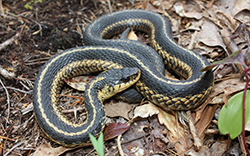
Among Maine’s inland (nonmarine) reptiles are seven turtle species and nine snake species. Maine’s 10th snake species, the timber rattlesnake, is extirpated, with no credible evidence of the species available since the mid 1800s. Most reptiles lay protected, shelled eggs that produce miniature sub-adults after development in the egg. However, some snake species, such as the garter snake, are viviparous, meaning they give birth to live young. Reptiles are covered in scales made or keratin (the same protein in your nails and hair), that provide a level of protection. Snakes and turtles are ectothermic (sometimes referred to as cold-blooded) so they are often spotted basking in the open to warm their bodies or hiding in the shade to cool off. During the winter months, Maine’s reptiles burrow underground (most snakes) or beneath the water (most turtles) to avoid extreme cold temperatures and slow their bodies heart rate, metabolism and breathing in a state of torpor.
Despite their long evolutionary history and varied survival adaptations, Maine’s reptiles are threatened by habitat loss and fragmentation, road mortality, and overcollection for the pet trade. Southern Maine’s landscape is rapidly developing, and active habitat protection will be critical for the preservation of our reptilian species.
Amphibians – Frogs and Salamanders
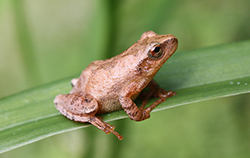
Maine is home to 18 species of amphibians, including nine frog and toad species, eight native salamander species, and one exotic salamander, the mudpuppy. Amphibian comes from the Greek term, Amphibia, meaning double-life; many amphibians live on land, but require access to water for a number of reasons. Their soft eggs that have no shell must be laid in water to allow for fluid and gas exchange during development. During the aquatic larval phase, amphibians use gills to breath underwater until their lungs are fully developed. Once developed, amphibians still require a moist environment to survive. Some species, in addition to having lungs, breath through their skin, called subcutaneous respiration. Amphibians are also ectotherms, meaning their body temperatures fluctuate with the environment. For this reason, most amphibians burrow underground or under water during cold months to hibernate. During the warmer months, those species that are not fully aquatic often take refuge in areas of moist soil under rocks and logs to avoid drying out.
Amphibians have several life history characteristics that make them more sensitive to certain threats than other vertebrates, including low mobility, extreme site fidelity, a requirement for both water and land, and a highly permeable skin that is vulnerable to pollution, acidity, elevated temperatures, and UV radiation.
Learn more about the Department’s work with reptiles and amphibians in the Research and Management Report.
Funding to support conservation work for these species in Maine comes primarily from contributions to the Endangered and Nongame Species Fund (via Loon License Plate and Chickadee Check-off) and a State Wildlife Grant from the U.S. Fish and Wildlife Service.
Species Information
Frogs
- American Bullfrog
- American Toad
- Gray Treefrog
- Green Frog
- Mink Frog
- Northern Leopard Frog
- Pickerel Frog
- Spring Peeper
- Wood Frog
Salamanders
How can you help?
Share your observations with the Maine Amphibian & Reptile Atlas Project! Please submit observations of any of these state-listed or special concern reptiles listed below as soon as possible.
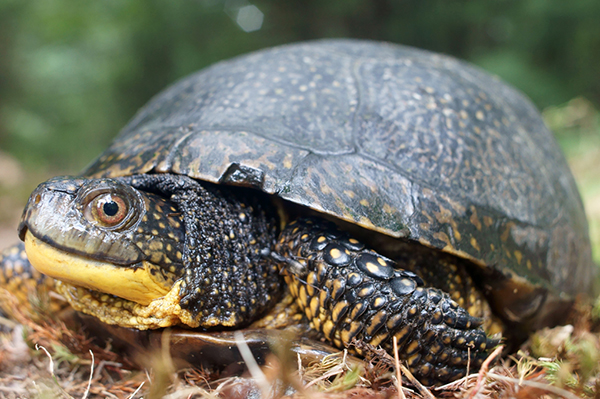
Blanding’s turtle (Endangered)
Photo by Derek Yorks
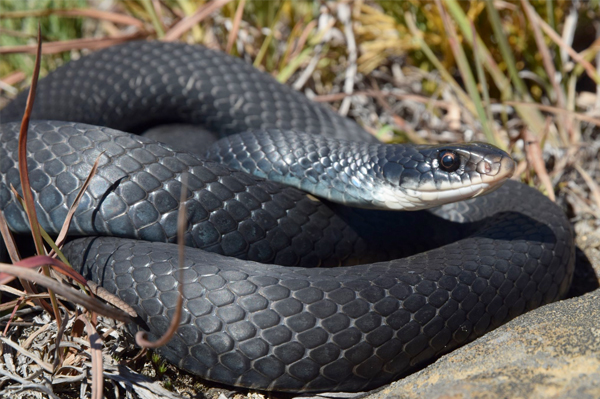
Black racer (State Endangered)
Photo by Derek Yorks
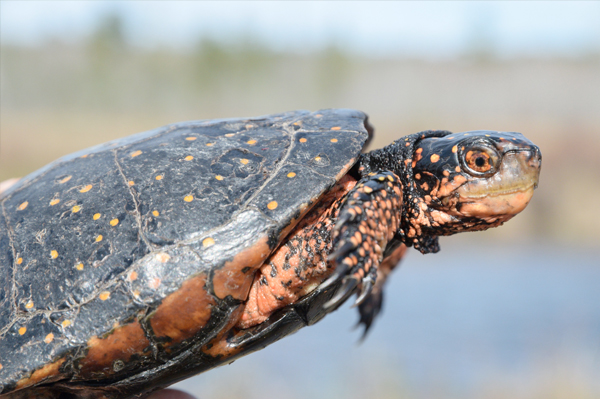
Spotted turtle (Threatened)
Photo by Derek Yorks
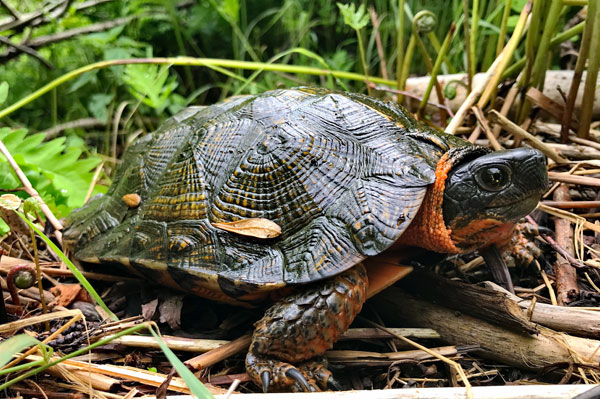
Wood turtle (Special Concern)
Photo by Photo by Derek Yorks
For more information please contact MDIFW Wildlife Biologist Kevin Ryan.